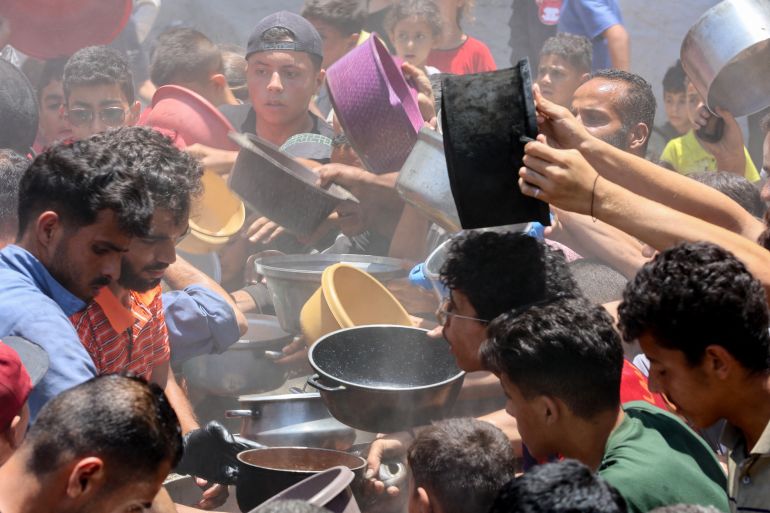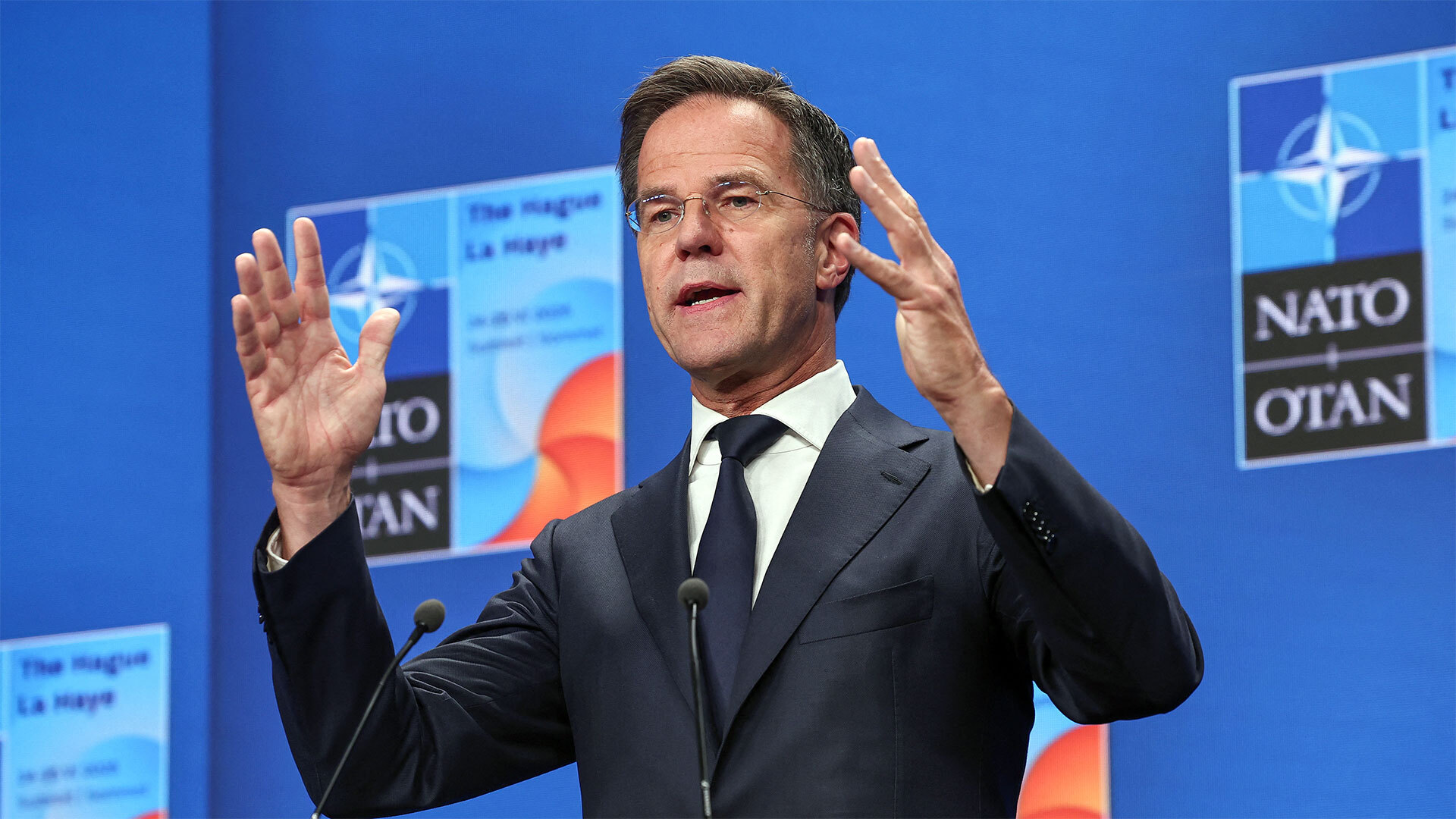Last Thursday, just days after he had ordered strikes upon Iran, Israeli Prime Minister Benjamin Netanyahu stood outside Beersheba’s Soroka Hospital and spoke of his outrage that the building had been hit in an Iranian counterstrike.
“They’re targeting civilians because they’re a criminal regime. They’re the arch-terrorists of the world,” he said of the Iranian government.
Similar accusations were levelled by other Israeli leaders, including the president, Isaac Herzog, and opposition leader Yair Lapid, during the conflict with Iran, which ended with a ceasefire brokered by United States President Donald Trump on Monday.
However, what was missing from these leaders was an acknowledgement that Israel itself has attacked almost every hospital in Gaza, where more than 56,000 people have been killed, or that the Strip’s healthcare system has been pushed to near total collapse.
It was an omission noticeable in much of the Israeli press reporting on the Beersheba hospital attack, with few mentions of the parallels between it and Israel’s own attacks on hospitals in Gaza. Instead, much of the Israeli media has supported these attacks, either seeking to downplay them, or justifying them by regularly claiming that Hamas command centres lie under the hospitals, an accusation Israel has never been able to prove.
Weaponising suffering
According to analysts who spoke to Al Jazeera, a media ecosystem exists in Israel that, with a few exceptions, both amplifies its leaders’ calls for war while simultaneously reinforcing their claims of victimhood, all while shielding the Israeli public from seeing the suffering Israeli forces are inflicting on Gaza and the occupied West Bank.
One Israeli journalist, Haaretz’s media correspondent Ido David Cohen, wrote this month that “reporters and editors at Israel’s major news outlets have admitted more than once, especially in private conversations, that their employers haven’t allowed them to present the humanitarian crisis in Gaza and the suffering of the population there”.
“The Israeli media … sees its job as not to educate, it’s to shape and mould a public that is ready to support war and aggression,” journalist Orly Noy told Al Jazeera from West Jerusalem. “It genuinely sees itself as having a special role in this.”
“I’ve seen [interviews with] people who lived near areas where Iranian missiles had hit,” Noy added. “They were given a lot of space to talk and explain the impact, but as soon as they started to criticise the war, they were shut down, quite rudely.”
Last September, a complaint brought by three Israeli civil society organisations against Channel 14, one of Israel’s most watched television networks, cited 265 quotes from hosts they claimed encouraged war crimes and crimes against humanity, including genocide. Among them, concerning Gaza, were the phrases “it really needs to be total annihilation” and “there are no innocents.”
A few months earlier, in April, the channel was again criticised within the Israeli media, this time for a live counter labelled “the terrorists we eliminated”, which made no distinction between civilians and fighters killed, the media monitoring magazine 7th Eye pointed out.
Analysts and observers described how Israel’s media and politicians have weaponised the horrors of the past suffering of the Jewish people and have moulded it into a narrative of victimhood that can be aimed at any geopolitical opponent that circumstances allow – with Iran looming large among them.
“It isn’t just this war,” Noy, an editor with the Hebrew-language Local Call website, said. “The Israeli media is in the business of justifying every war, of telling people that this war is essential for their very existence. It’s an ecosystem. Whatever the authority is, it is absolutely right. There is no margin for doubt, with no room for criticism from the inside. To see it, you have to be on the outside.”
“The world has allowed Israel to act as some kind of crazy bully to do whatever it wants, whenever it wants,” Noy added. “They can send their troops into Syria and Lebanon, never mind Gaza, with impunity. Israel is fine. Israel is bulletproof. And why wouldn’t they think that? The world allows it, then people are shocked when Iran strikes back.”
The Israeli media largely serves as a tool to manufacture consent for Israel’s actions against the Palestinians and in neighbouring countries, while shielding the Israeli public from the suffering its victims endure.
Exceptions do exist. Israeli titles such as Noy’s Local Call and +972 Magazine often feature coverage highly critical of Israel’s war on Gaza, and have conducted in-depth investigations into Israel’s actions, uncovering scandals that are only reported on months later by the international media. Joint reporting from Local Call and +972 Magazine has revealed that the Israeli military was using an AI system to generate bombing target lists based on predicted civilian casualties. Another report found that the Israeli military had falsely declared entire Gaza neighbourhoods as evacuated, which then led to the bombing of civilian homes in areas that were still inhabited.
A more famous example is the liberal daily Haaretz, which regularly criticises Israel’s actions in Gaza. Haaretz has faced a government boycott over its coverage of the war.
“It’s not new,” Dina Matar, professor of political communication and Arab media at SOAS University of London, said. “Israeli media has long been pushing the idea that they [Israel] are the victims while calling for actions that will allow them to present greater victimhood [such as attacking Iran]. They often use emotive language to describe a strike on an Israeli hospital that they’ll never use to describe an Israeli strike on a hospital in Gaza.”
Take Israeli media coverage of the siege of northern Gaza’s last remaining functioning healthcare facility, the Kamal Adwan Hospital, in December.
While descriptions of the attacks on the hospital from United Nations special rapporteurs spoke of their “horror” at the strikes, those in the Israeli press, in outlets such as Ynet or The Times of Israel, instead focused almost exclusively upon the Israeli military’s claims of the numbers of “terrorists” seized.
Among those seized from the hospital were medical staff, including the director of Kamal Adwan, Dr Hussam Abu Safia, who has since been tortured in an Israeli military prison, his lawyer previously told Al Jazeera.
In contrast, Israeli coverage of the Soroka Hospital attack in Beersheba almost universally framed the hit as a “direct strike” and foregrounded the experience of the evacuated patients and healthcare workers.

In this environment, Matar said, Netanyahu’s representation of Israel as home to a “subjugated people” reinforced a view that Israelis have long been encouraged to hold of themselves, even amid the decades-long occupation of Palestinian land.
“No one questions what Netanyahu is saying because the implications of his speech make sense as part of this larger historical narrative; one that doesn’t allow for any other [narrative], such as the Nakba or the suffering in Gaza,” the academic said.






